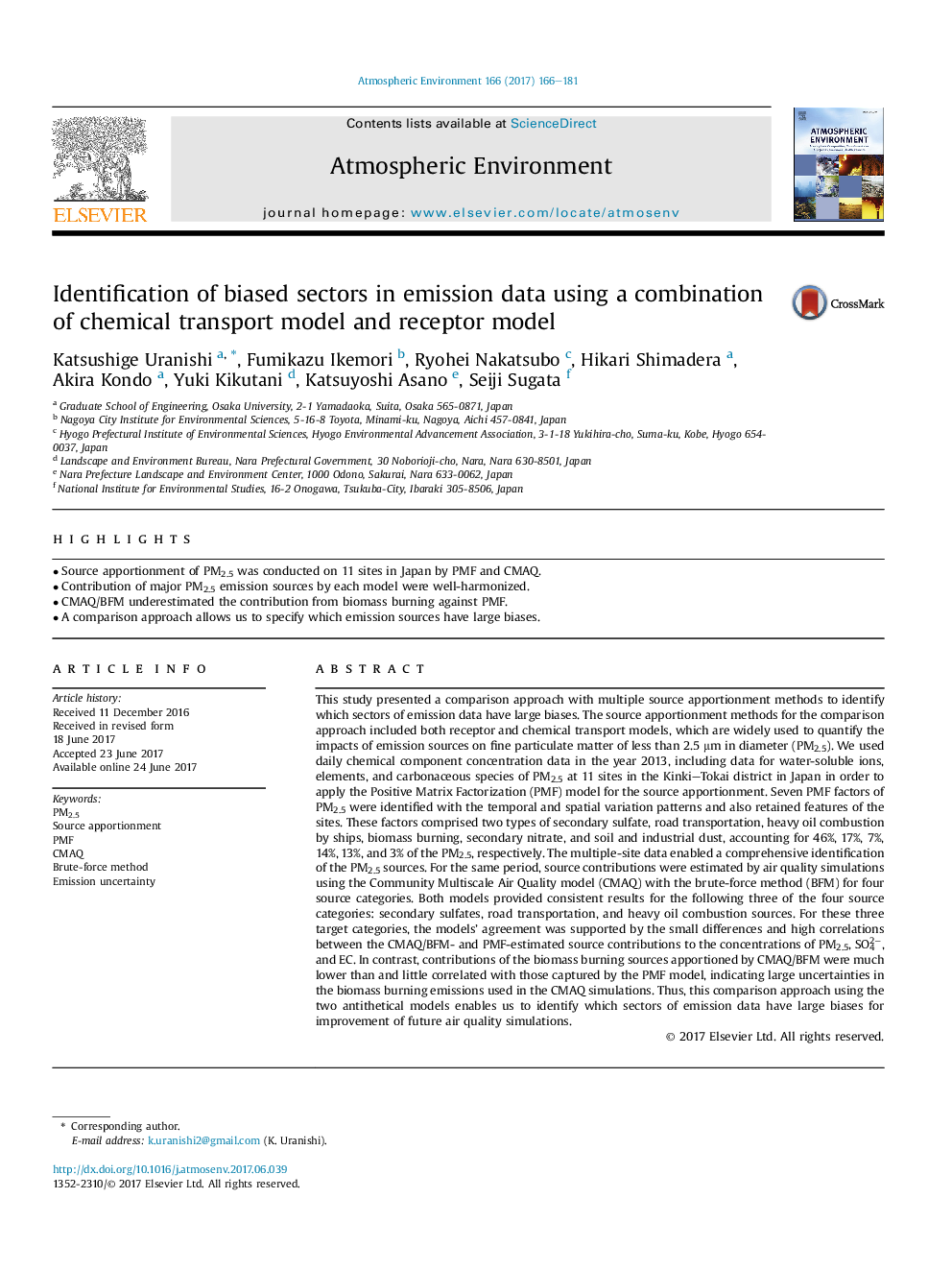| کد مقاله | کد نشریه | سال انتشار | مقاله انگلیسی | نسخه تمام متن |
|---|---|---|---|---|
| 5752841 | 1620308 | 2017 | 16 صفحه PDF | دانلود رایگان |
- Source apportionment of PM2.5 was conducted on 11 sites in Japan by PMF and CMAQ.
- Contribution of major PM2.5 emission sources by each model were well-harmonized.
- CMAQ/BFM underestimated the contribution from biomass burning against PMF.
- A comparison approach allows us to specify which emission sources have large biases.
This study presented a comparison approach with multiple source apportionment methods to identify which sectors of emission data have large biases. The source apportionment methods for the comparison approach included both receptor and chemical transport models, which are widely used to quantify the impacts of emission sources on fine particulate matter of less than 2.5 μm in diameter (PM2.5). We used daily chemical component concentration data in the year 2013, including data for water-soluble ions, elements, and carbonaceous species of PM2.5 at 11 sites in the Kinki-Tokai district in Japan in order to apply the Positive Matrix Factorization (PMF) model for the source apportionment. Seven PMF factors of PM2.5 were identified with the temporal and spatial variation patterns and also retained features of the sites. These factors comprised two types of secondary sulfate, road transportation, heavy oil combustion by ships, biomass burning, secondary nitrate, and soil and industrial dust, accounting for 46%, 17%, 7%, 14%, 13%, and 3% of the PM2.5, respectively. The multiple-site data enabled a comprehensive identification of the PM2.5 sources. For the same period, source contributions were estimated by air quality simulations using the Community Multiscale Air Quality model (CMAQ) with the brute-force method (BFM) for four source categories. Both models provided consistent results for the following three of the four source categories: secondary sulfates, road transportation, and heavy oil combustion sources. For these three target categories, the models' agreement was supported by the small differences and high correlations between the CMAQ/BFM- and PMF-estimated source contributions to the concentrations of PM2.5, SO42â, and EC. In contrast, contributions of the biomass burning sources apportioned by CMAQ/BFM were much lower than and little correlated with those captured by the PMF model, indicating large uncertainties in the biomass burning emissions used in the CMAQ simulations. Thus, this comparison approach using the two antithetical models enables us to identify which sectors of emission data have large biases for improvement of future air quality simulations.
Journal: Atmospheric Environment - Volume 166, October 2017, Pages 166-181
